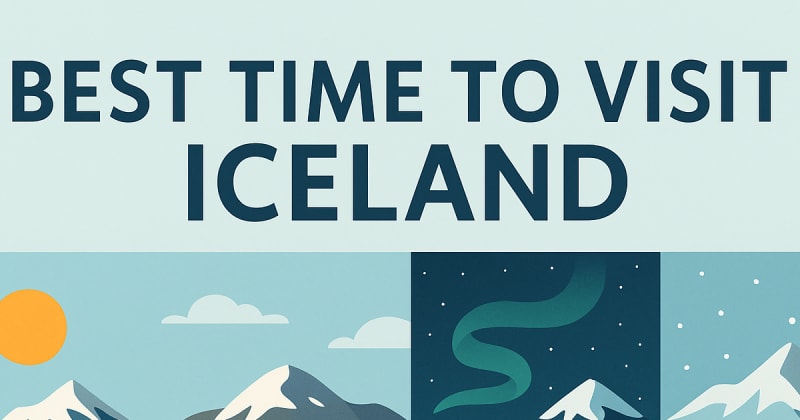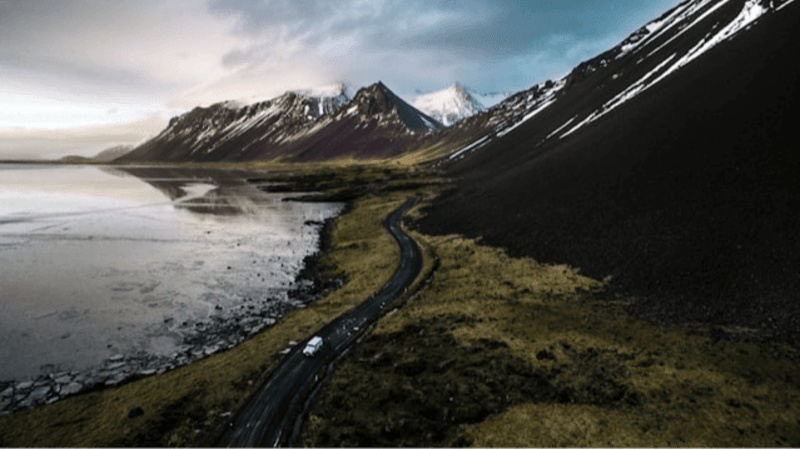
Thinking about when to visit Iceland?
Good news, there's no wrong time. But depending on what you want to see or do (northern lights, waterfalls, road trips, etc.), some months make more sense than others.
We've helped thousands of travelers plan smarter trips.
The ?best? time depends on your goals, your budget, and how flexible you are with Iceland's unpredictable weather.
This guide breaks it all down. Real insights, cost tips, and the kind of info most travel brochures skip.
Quick Overview: What's the Best Time to Visit Iceland?
| Travel Goal | Best Time to Visit |
|---|---|
| Northern Lights | September to March |
| Long Days & Summer Adventures | June to August |
| Budget Travel | April, May, September |
| Fewer Crowds + Decent Weather | Late May or Early Sept |
| Ice Caves + Snowy Landscapes | November to March |
If you're trying to balance good weather, decent prices, and fewer tourists, late May or early September is often your best bet.
Summer in Iceland (June to August)
What to Expect
- Daylight: Up to 21+ hours, think midnight sunsets
- Weather: Mild (10?15°C / 50?59°F), with occasional rain
- Vibe: Lively, busy, energetic
This is Iceland's peak season. Everything is open: Highland roads, campsites, remote trails. It's the best time for full Ring Road trips, hiking, and outdoor adventures.
You won't need to worry much about road conditions.
Pros
- Midnight Sun (late June)
- Puffin season (May to early August)
- Easy driving conditions
Cons
- High prices, often 30 to 50% more than winter
- Most tourists visit in July and August
- 4x4 and camper vans book out months ahead
Rental Tip: You probably don't need a 4x4 unless you're heading into the Highlands. A compact or camper van is usually enough.
Fall in Iceland (September to October)
What to Expect
- Daylight: Drops quickly, from 14 hours in early Sept to 8 in late Oct
- Weather: Cool and changeable (5?10°C / 41?50°F), rain is common
- Vibe: Quieter, moodier, great colors
This is shoulder season. It's a great time to see the northern lights without freezing through deep winter nights.
Pros
- Northern lights visible from early September
- Lower prices on flights and rentals
- Autumn colors in late September
Cons
- Weather shifts often
- Some rural cafés and campsites may close
Rental Tip: A standard car works for most routes, but if you're going off the Ring Road, go with a 4x4. Icy mornings can sneak up by mid-October.

Winter in Iceland (November to March)
What to Expect
- Daylight: As little as 4 hours around the solstice
- Weather: Snow, wind, ice, with frequent storms
- Vibe: Quiet, otherworldly, dramatic
This is aurora season and the time for icy waterfalls, frozen lava fields, and ice caves. Just know, driving gets trickier, and plans can change fast.
Pros
- Best time to see the northern lights
- Cheapest flights and rentals
- Stunning winter photography
Cons
- Short daylight hours
- Some remote roads close
- Tours may cancel due to weather
Rental Tip: Rent a 4x4. Even if you're not venturing far from Reykjavík, it's safer. All Northbound rentals in winter include studded tires.
Check out best tips for driving a rental car in winter
Spring in Iceland (April to May)
What to Expect
- Daylight: Rises fast, from 13 to nearly 20 hours
- Weather: Cool (0?10°C / 32?50°F), snow is still possible
- Vibe: Fresh, calm, fewer crowds
Spring is underrated. Roads start reopening, prices are fair, and puffins begin returning in late May.
Pros
- Waterfalls are full with snowmelt
- Cheaper car rentals and flights
- No big crowds at popular sights
Cons
- April can still bring snow in the north
- Highland roads remain closed
- Some tours don't start until June
Rental Tip: A regular car usually works, but check weather forecasts before heading east or inland. You can learn more about Iceland's weather by month to help plan.
Northern Lights: When Can You See Them?
You won't see auroras in summer. You need darkness, clear skies, and a bit of luck.
Best time:
- Mid-September through late March
- Strongest months: October to March
- Best hours: 9 pm to 2 am
Check forecasts before heading out:
For deeper tips, see our full guide to seeing the northern lights.
How Prices Change by Season
| Month | Price Level | Notes |
|---|---|---|
| January?March | Low | Coldest months, great for aurora |
| April?May | Medium?Low | Shoulder season, great value |
| June?August | High | Peak demand, book early |
| September | Medium | Nice balance of price and weather |
| October | Medium?Low | Budget-friendly, still good light |
| November | Low | Quiet, snowy, fewer tourists |
| December | Medium | Higher around Christmas and New Year |
Rental Tip: Rental prices can double between winter and summer. Book 3 to 6 months in advance for better rates and more choices. If you're trying to keep costs low, check out our Iceland budget travel guide for more tips.

Final Thoughts
There's no one perfect time to visit Iceland. It depends on what you're after.
Here's a quick guide:
- Love road trips and long days? ? Go in July or August
- Prefer fewer crowds and decent weather? ? May or September
- Want to see the aurora and snow? ? Try February or March
- Looking to travel on a budget? ? January, April, or October
Just be ready to adapt. Iceland's weather moves fast, so knowing a few practical travel tips can make your trip smoother.
We have plenty of tips when traveling to Iceland at our blog section, check it out.
FAQs
What month is best overall to visit Iceland?
Most travelers go for June to August. But May and September offer a better balance of weather, price, and space.
Is Iceland worth visiting in winter?
Yes. The landscapes are unreal, and you can see the aurora, visit ice caves, and avoid crowds. Just plan around storms and road conditions.
Do I always need a 4x4 rental?
No. In summer, most travelers are fine with a small car or camper. But in winter or if you're heading into the Highlands, you'll want a 4x4.
Are the roads always open?
The Ring Road stays open most of the year. F-roads in the Highlands open from late June through early September.
When's the cheapest time to visit Iceland?
January, February, April, and October tend to have the best deals on flights and rentals. They're colder months, but still full of adventure.

 English
English Deutsch
Deutsch Français
Français Español
Español Italiano
Italiano Dansk
Dansk Polski
Polski Português
Português 日本語
日本語 Svensk
Svensk Nederlands
Nederlands Norsk
Norsk 中文
中文 한국어
한국어